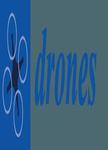版权所有:内蒙古大学图书馆 技术提供:维普资讯• 智图
内蒙古自治区呼和浩特市赛罕区大学西街235号 邮编: 010021

作者机构:Natl Univ Comp & Emerging Sci Dept Elect Engn Lahore 54770 Pakistan Khalifa Univ Ctr Robot & Autonomous Syst Abu Dhabi 127788 U Arab Emirates Univ Hull Fac Sci & Engn Sch Comp Sci Kingston Upon Hull HU6 7RX England
出 版 物:《DRONES》 (Drones)
年 卷 期:2025年第9卷第1期
页 面:73-73页
核心收录:
主 题:VTOL UAVs position tracking linear quadratic integral control rate-varying integral compensator hyperbolic function hardware-in-the-loop validation
摘 要:This article presents an optimal tracking controller retrofitted with a nonlinear adaptive integral compensator, specifically designed to ensure robust and accurate positioning of Vertical Take-Off and Landing (VTOL) Unmanned Aerial Vehicles (UAVs) that utilize contra-rotating motorized propellers for differential thrust generation. The baseline position controller is synthesized by employing a fixed-gain Linear Quadratic Integral (LQI) tracking controller that stabilizes position by tracking both state variations and pitch-axis tracking error integral, which adjusts the voltage to control each coaxial propeller s speed accurately. Additionally, the baseline tracking control law is supplemented with a rate-varying integral compensator. It operates as a nonlinear scaling function of the tracking-error velocity and the braking acceleration to enhance the accuracy of reference tracking without sacrificing its robustness against exogenous disruptions. The controller s performance is analyzed by performing experiments on a tailored hardware-in-the-loop aero-pendulum testbed, which is representative of VTOL UAV dynamics. Experimental results demonstrate significant improvements over the nominal LQI tracking controller, achieving 17.9%, 61.6%, 83.4%, 43.7%, 35.8%, and 6.8% enhancement in root mean squared error, settling time, overshoot during start-up, overshoot under impulsive disturbance, disturbance recovery time, and control energy expenditure, respectively, underscoring the controller s effectiveness for potential UAV and drone applications under exogenous disturbances.